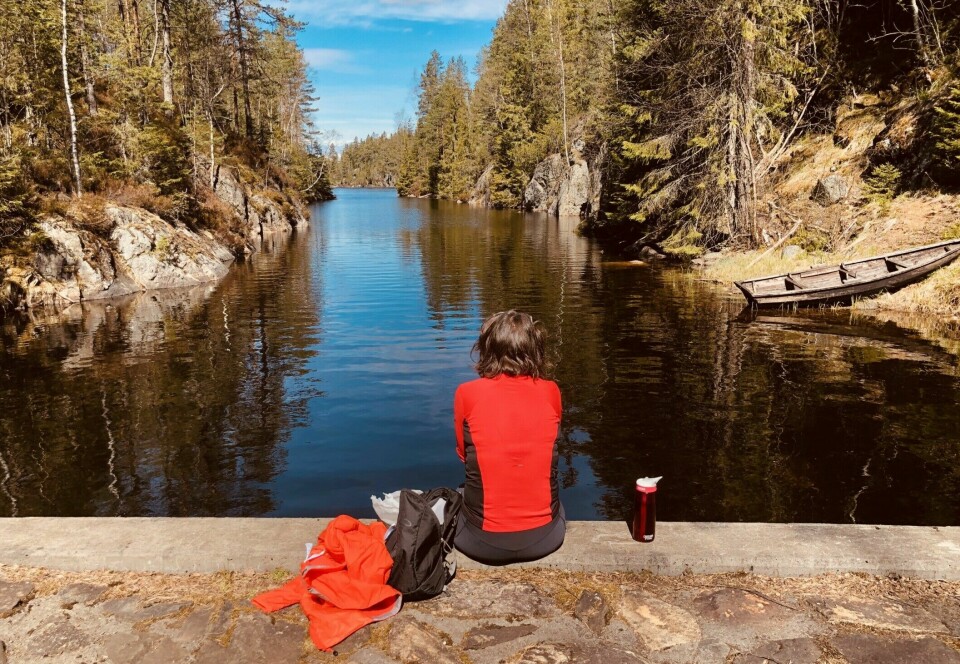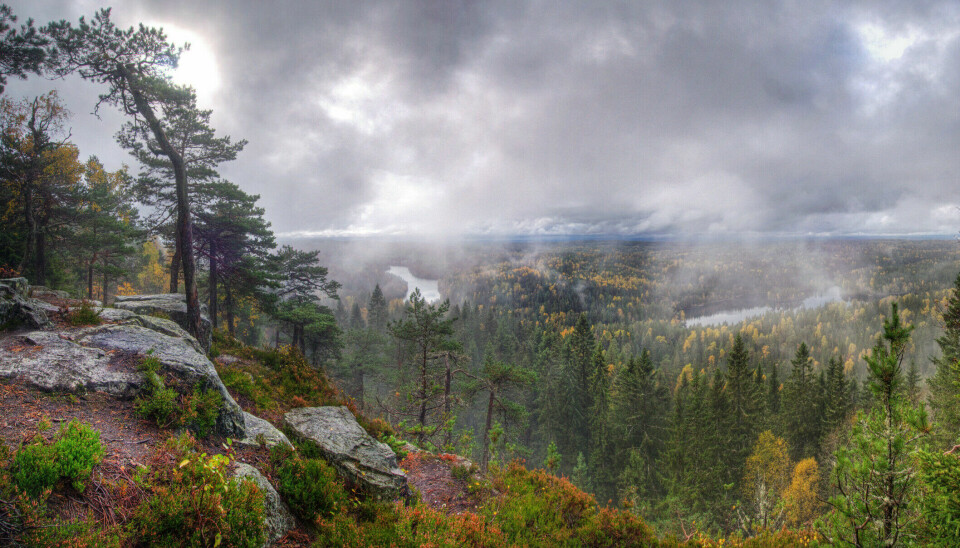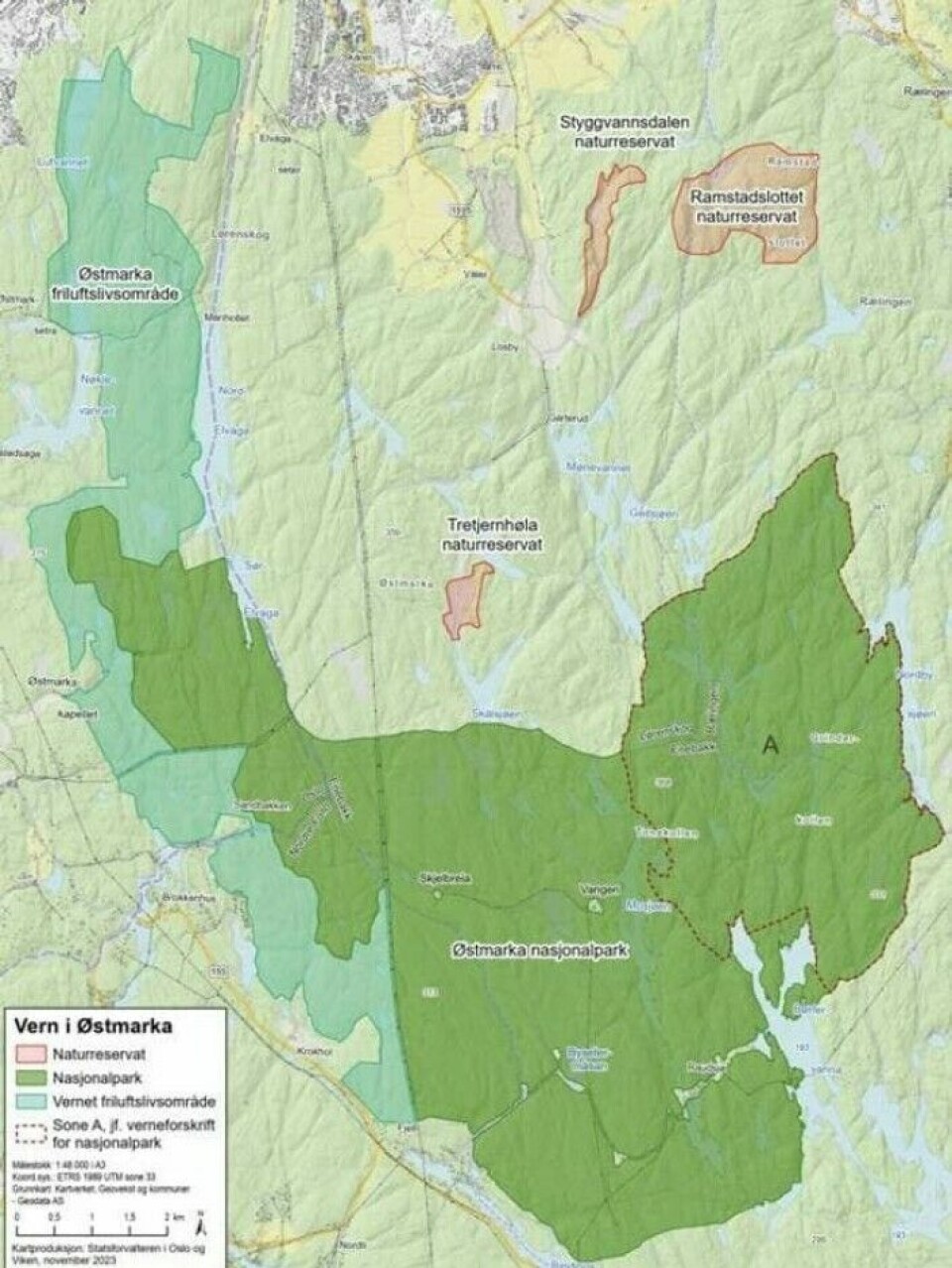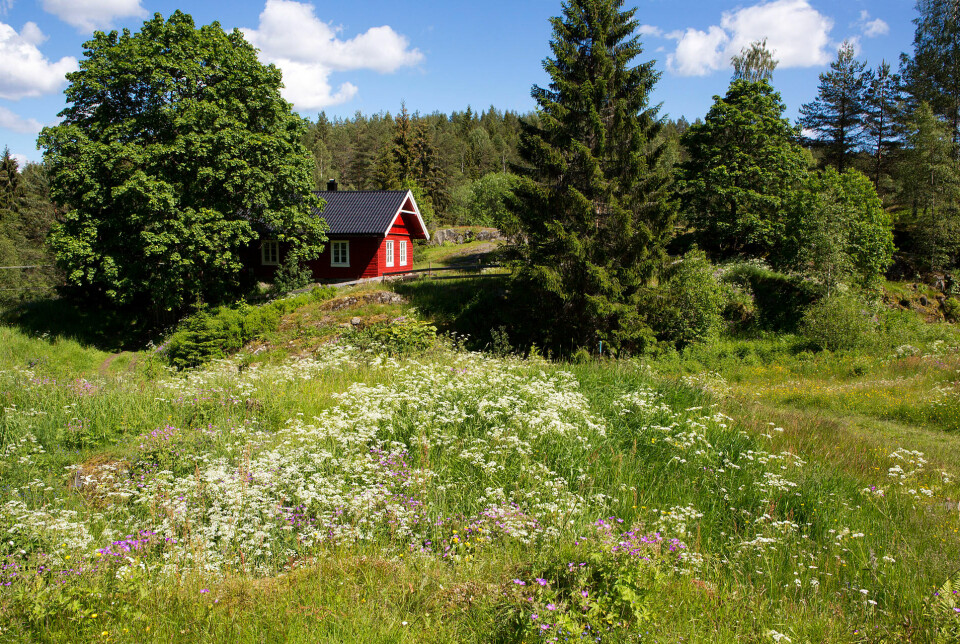
Norway becomes one of the few countries with a large national park right next to its capital
A small group of researchers worked on the new Østmarka National Park.
“I've really enjoyed this job," Egil Bendiksen admits. He is a researcher at the Norwegian Institute for Nature Research (NINA).
The government has just announced the new Østmarka National Park.
Bendiksen – along with several other colleagues – has had the main responsibility for documenting and planning what will now become a 71 square kilometre protected national park and outdoor recreation area southeast of Norway's capital Oslo.
Norway will be one of the few countries in the world that can boast a large national park right outside its capital.

Found untouched areas near Oslo
“Hardly any of the land that’s now protected is real primeval forest that has never been logged. The only such forest of a significant size in Norway would be in Pasvik in Eastern Finnmark,” Bendiksen says.
“But a lot of the land that the government wants to turn into Østmarka National Park and the Østmarka outdoor recreation area has been left alone for many years."
Østmarka’s old-growth forest around Oslo offers some of the largest quality areas of untouched nature.

Better chance of survival for rare species
NINA researchers have concluded that there is much potential for the restoraton of nature in Østmarka. This could make it a vital habitat for endangered species.
The researchers have found several small pockets in Østmarka with associated with ancient natural forests.
As the forest in the national park and recreational area gradually ages, the researchers believe that these species could spread.
Old trees that are allowed to die a natural death can become homes for many rare plants and animals.
The NINA researchers were asked by the county governor in Oslo and Viken and the Norwegian Environment Agency to assess whether the natural values in Østmarka meet the Norwegian Nature Diversity Act's requirements for a national park.
The answer was yes.
Østmarka National Park
Norwegian national parks are primarily in the mountains. Now, the country will get its first urban national park.
Østmarka National Park will cover an area of 54 square kilometres in the municipalities of Enebakk, Nordre Follo, Oslo, Rælingen, and Lørenskog.
In addition, a 17 square kilometre outdoor recreation area is being created closer to the Oslo districts of Østensjø, Søndre Nordstrand, and Alna in Groruddalen.

Oslo municipality bought a whole forest
Oslo municipality bought up the entire Rausjømarka forest in the neighbouring municipality of Enebakk in the 1960s.
“At the time, Oslo municipality probably did this to enable logging there,” Bendiksen says.
“But important parts of this area were left untouched. The same applies to a smaller area in the neighbouring municipality of Nordre Follo, which will also become part of the national park.”
Recreational area near Oslo
The parts of the protected area closest to Oslo will not be given national park status, but will become an outdoor recreational area.
These areas are already used intensively for outdoor activities.
“The most important thing, however, is that there will be no more logging here either,” Bendiksen says.
He shares an encouraging discovery made during their nature survey: Right here, closest to the large suburbs southeast of Oslo, large areas of old-growth forest can still be found. These are areas of great natural value, and several endangered species have survived here.

Bog restorations
Bog restorations will comprise part of the work to recreate natural systems in the new national park.
“Large excavators can look ugly when they roll out and start filling in ditches on bogs that were drained many years ago,” Bendiksen says. “But my experience is that it will eventually look nice."
Restoration work is already well underway on several bogs in Østmarka.
The politics behind a new national park
The researcher points to the interest organisation Friends of Østmarka as an important driving force for establishing a national park there.
“They were the ones who proposed creating a national park here in 2012,” Bendiksen says. “On a political side, Ola Elvestuen (Liberal Party) and the county governor of Oslo and Viken have been important collaborators in achieving this.”
Bendiksen points out that the plans for a national park have of course also been met with opposition.
“But there is little reason for cabin owners or people who want to go skiing or engage in other outdoor activities to fear that they will encounter problems. Everything that can be considered acceptable use of the area will probably be able to continue as before," he says.
———
Translated by Ingrid P. Nuse
Read the Norwegian version of this article at forskning.no





































